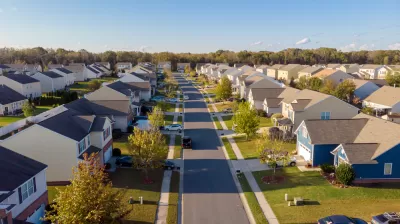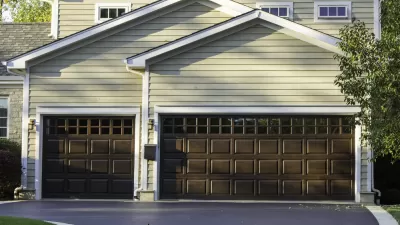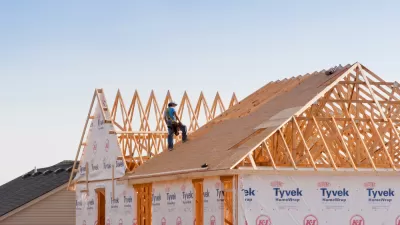Home builders are building a record number of single-family rentals, and young, modest-income households with children are more likely to live in those new homes.

"While still a relatively small share of all new housing, record numbers of single-family rentals were built in 2020," according to Alexander Hermann, who is sharing the findings of recent analysis by the Joint Center for Housing Studies of Harvard University.
"According to our tabulations of Census Bureau New Residential Construction data, 49,000 single-family rentals were started last year, up from 14,000 at the bottom in 2009 and surpassing the previous high of 47,000 in 2003 (Figure 1). However, single-family rentals remained just under 4 percent of total housing construction and 12 percent of rental construction."
As noted by Hermann, single-family rentals provide young, relatively modest families with children much-needed housing options. The Covid-19 pandemic has only spurred demand, resulting in the increased pace of construction, for single-family rentals.
"Indeed, single-family homes provide additional space for home offices, exercise, and remote learning; offer access to private outdoor space; and are often located in suburban areas—all characteristics associated with rising demand over the past year. At the same time, home prices have risen considerably in the for-sale market, making homebuying difficult for many moderate-income families who cannot afford rising prices and larger downpayments."
The prospect of more American families renting, rather than buying, homes has been framed as a red flag in the housing market in discussions about the growing footprint of Wall Street and large, institutional investors in the housing market. Many of those institutional acquisitions are happening at the low end of the market in suburban, single-family neighborhoods, according to recent reporting by the Wall Street Journal. Hermann's presentation of single-family rentals as a housing opportunity, thus, stands in contrast to the threat implied by the response to the news about the growing number of rental houses in the existing housing stock.
FULL STORY: YOUNG FAMILIES AND THE GROWING NUMBER OF NEW SINGLE-FAMILY RENTALS

Planetizen Federal Action Tracker
A weekly monitor of how Trump’s orders and actions are impacting planners and planning in America.

The Simple Legislative Tool Transforming Vacant Downtowns
In California, Michigan and Georgia, an easy win is bringing dollars — and delight — back to city centers.

San Francisco's School District Spent $105M To Build Affordable Housing for Teachers — And That's Just the Beginning
SFUSD joins a growing list of school districts using their land holdings to address housing affordability challenges faced by their own employees.

In More Metros Than You’d Think, Suburbs are Now More Expensive Than the City
If you're moving to the burbs to save on square footage, data shows you should think again.

The States Losing Rural Delivery Rooms at an Alarming Pace
In some states, as few as 9% of rural hospitals still deliver babies. As a result, rising pre-term births, no adequate pre-term care and "harrowing" close calls are a growing reality.

The Small South Asian Republic Going all in on EVs
Thanks to one simple policy change less than five years ago, 65% of new cars in this Himalayan country are now electric.
Urban Design for Planners 1: Software Tools
This six-course series explores essential urban design concepts using open source software and equips planners with the tools they need to participate fully in the urban design process.
Planning for Universal Design
Learn the tools for implementing Universal Design in planning regulations.
Smith Gee Studio
City of Charlotte
City of Camden Redevelopment Agency
City of Astoria
Transportation Research & Education Center (TREC) at Portland State University
US High Speed Rail Association
City of Camden Redevelopment Agency
Municipality of Princeton (NJ)





























